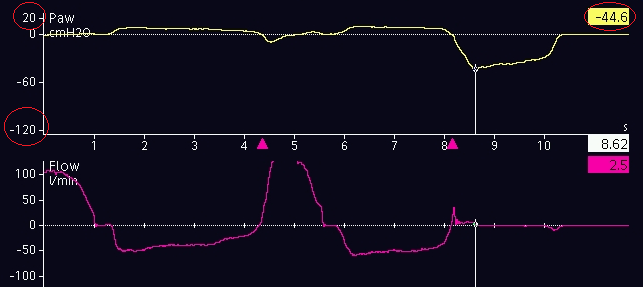
Author: Bernhard Schmitt, Simon Franz
Date of first publication: 02.10.2020
Last change: 02.10.2020
SW versions updated
Definition of MIP
The MIP is defined as the maximal inspiratory effort in the form of pressure generated against an occluded airway. The MIP value can be determined by means of a prolonged airway opening occlusion maneuver, which allows the maximal inspiratory effort to be obtained even without patient cooperation. The duration of an MIP trial varies from 1 to 25 s, and should be repeated at least twice to ensure a reliable value (
MIP trial on HAMILTON‑G5/S1 ventilators
How to perform an MIP trial using the HAMILTON‑G5/S1:
- Patient must be active, that means breathing spontaneously
- Set the Y‑axis of the pressure curve manually: Positive 20, negative ‑120
- Set PEEP to 0
- Perform an expiratory hold
- Measure the minimum of the pressure curve (see Figure 1)
In this example the measured MIP is 44.6, as MIP is always a positive value.
Currently measurement of these values is only possible on the HAMILTON‑G5/S1.
Relevant software: 2.8x and later




